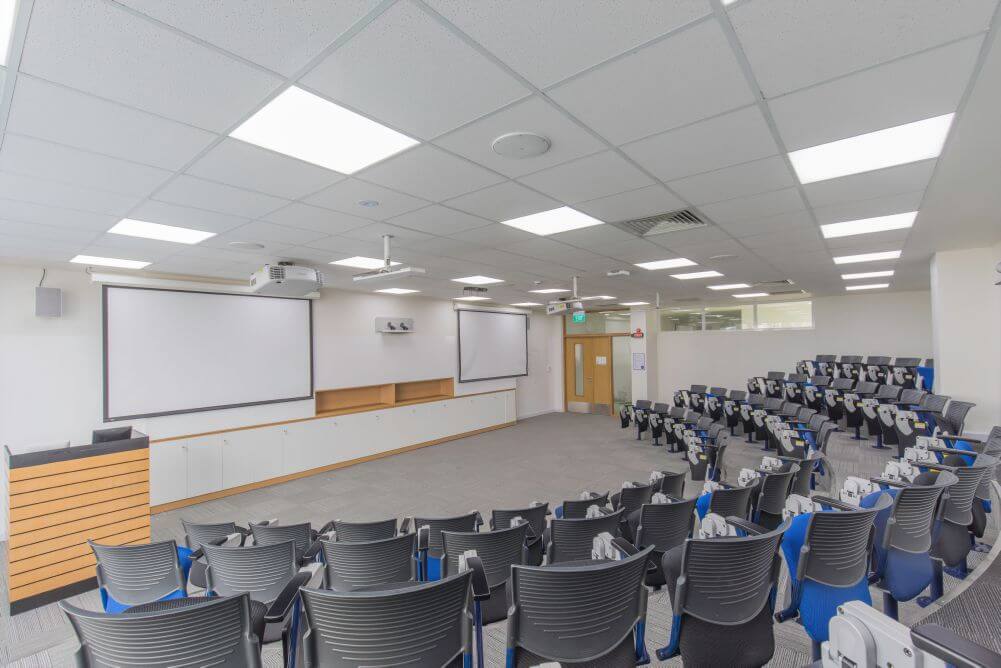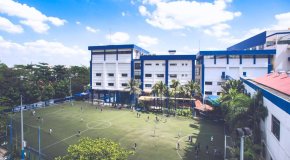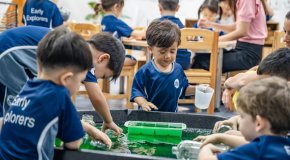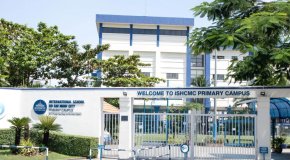How To Move Schools Successfully? 5 Tips for Parents
Table of Contents
- How To Move Schools Successfully? 5 Tips for Parents
- Don't miss out - reserve your spot today!
- Research The School Options Matching Your Child‘s Learning Style
- Pick Your Favorites
- Visit The Schools
- Process The Transfer Application
- Preparing Your Child for a School Change
- Settle In for Your Child After Moving Schools
- Conclusions
Parents face numerous challenges due to the complex steps involved in the process of transferring their children to a new school. To mitigate this issue for parents worldwide, this article will introduce a guideline on how to move schools from initial research and preparation to the actual transition, including:
- Research the school options matching your child’s learning styles
- Pick your favorite schools
- Visit the schools
- Process the transfer application
- Prepare your child for a school change
- Set in for your child after moving schools
Don't miss out - reserve your spot today!
To register for “IB PYP Math with ISHCMC Students”, please fill in the form below.
"*" indicates required fields
Research The School Options Matching Your Child‘s Learning Style
General topics should be mentioned in discussion with your children to identify the ideal school environment matching their learning style:
- Structured or less-structured environment: Talk about whether they prefer hands-on activities, lectures, group work, or individual study to understand their learning preferences.
- More challenging assignments: Discuss the subjects they are passionate about and ensure the school offers strong programs in those areas.
- Level of personal attention: Talk about the importance of support services like counseling, tutoring, and special education resources, if applicable.
- Future Goals: Discuss how the school can support their future goals, whether academic, artistic, athletic, or vocational.

Additionally, understanding your child’s learning styles is crucial for identifying suitable educational programs that nurture the development of both soft and hard skills. Effective learning approaches stimulate your child’s curiosity and encourage them to engage more actively with educational materials:
- Play-based learning
- Inquiry-based learning
- Home-based learning
- On-campus learning
- Campus-home learning
To make it consistent with what we are communicating to prospective parents and the reality, ISHCMC offer inquiry-based learning and all students need to attend their class at the campuses. Before, we mentioned play-based learning but only for primary grade levels.
Pick Your Favorites
Educational institutions distinguish themselves through unique competitive advantages, such as innovative academic programs, certified teachers, and various support services. As a result, parents may find it challenging to sift through this information to choose the most appropriate educational environment when considering a school change.
The experienced parents share the common criteria utilized to filter their selection of preferred schools. These factors encompass the school’s location, academic programs’ quality, teaching methodologies, tuition fees, supporting services, and the institution’s commitment to diversity and inclusivity.
School Location
The ideal location for your children’s educational institution should be conveniently accessible, taking into account its proximity to your workplace and home, to ensure ease and peace of mind during commutes.
When identifying an ideal location for your children’s school that meets all your criteria, consider the following factors:
- Transportation: Check out available public transportation, such as buses, trains, and subways, to design a suitable travel plan. ISHCMC offers a school bus service with strict safeguarding guidelines and training to ensure students’ safety.
- Neighborhood safety: Examine the surroundings around the school in terms of general ambiance, crime statistics, and emergency services to guarantee your children and family’s safety.
- Distance: Estimate the travel time to the school and workplace. Accessibility to essential amenities, like grocery stores and pharmacies, is also critical in selecting the most suitable location.
Academic Programs
A quality curriculum is crucial for guiding students towards developing the right mindset and a solid foundation, essential for achieving higher future goals. Whether the education program aligns with national or international frameworks, its core focus should include:
- Improving critical thinking, problem-solving, and teamwork skills: Deliver knowledge through extracurricular, intramural, and interscholastic activities to foster students’ soft and hard skills. ISHCMC’s curriculum allows students to develop social, communication, critical thinking, research, and self-management skills.
- Spending more time to support each student: Smaller class sizes with low student-to-teacher ratios earn more plus points when tracking every student’s progress effectively.
- Applying technology to increase learning productivity: Facilitate easy access to the vast knowledge database and allow for diverse learning styles. For example, ISHCMC assists students in accessing iPads and Google Education Suits to collaborate, communicate, and create.
- Evaluating student performance with a modern system: Besides conventional exams, the education system can credit students through project-based assignments and peer reviews to ensure an inclusive assessment.
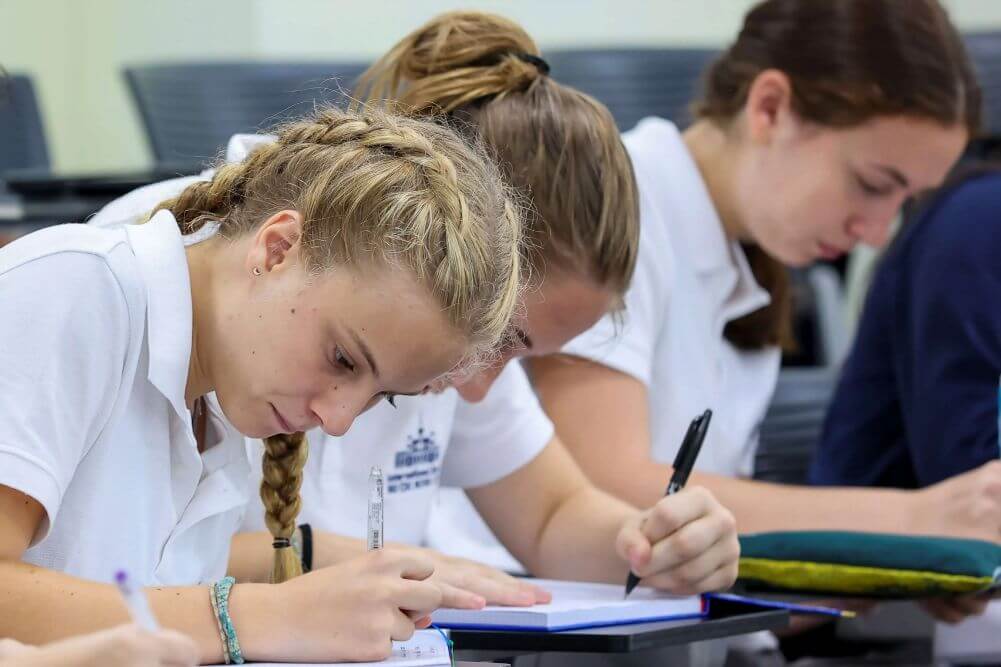
Many parents prioritize a holistic education model when searching for a new school for their children. With the aim of all-rounded development, ISHCMC offers a wide range of unique academic programs to improve leadership, teamwork, critical thinking, and other foundational skills and establish students’ bright futures.
Supporting Services for Children
Creating a nurturing and supportive environment is essential for fostering the physical, mental, and intellectual growth of students. Besides academic programs, ISHCMC assists students with various supporting services, including:
- Counselors: Working closely with parents and students for optimal support in the areas of academic, social, and personal development.
- Learning Support: Organizing progressive discussions about initial strategies to assist student’s learning needs.
- English As an Additional Language (EAL): Narrowing the language barrier by extra English programs for those with other mother tongues.
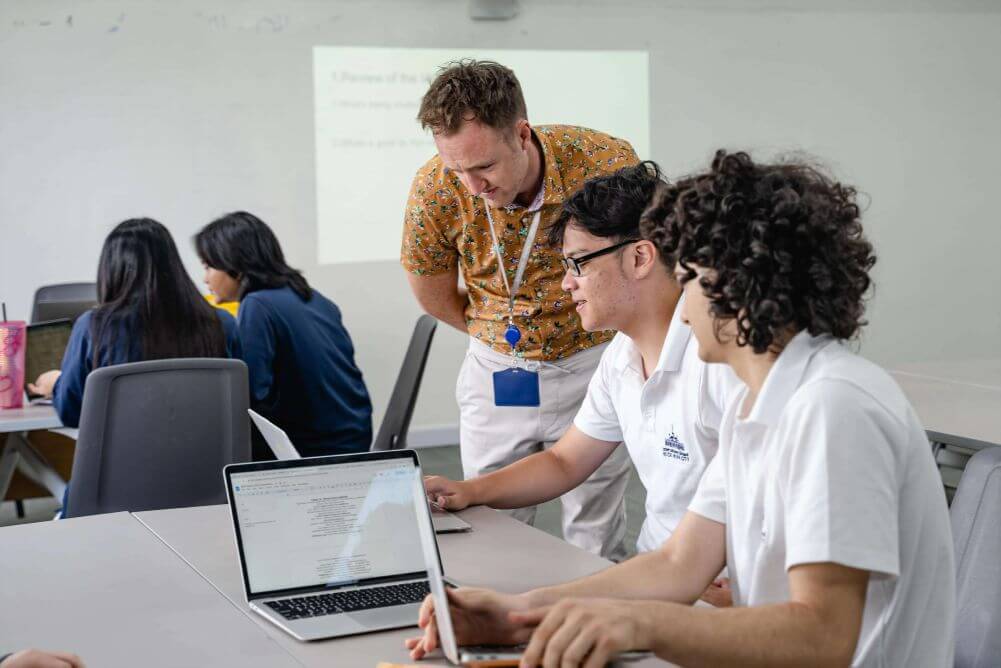
Teaching Styles
A unique learning methodology delivered by certificated teachers contributes to upholding the school’s reputation. The knowledge delivery technique should ignite students’ curiosity and eagerness to learn.
Several critical factors inform the characteristics defining an effective learning style:
- Special instructional method: Facilitate an engaging and personalizing learning environment, tailoring to individual student needs.
- Teaching qualification: Consider the teachers’ certificated backgrounds and teaching experience to consolidate your decision.
- Assessment and feedback: Identify areas of improvement and strengths with continuous feedback.
- Language barrier: Create a supportive environment for every student to access the curriculum without limitation in their native language.
Tuition Fees
An examination of learning fees should include a detailed assessment across multiple categories:
- Overall fees
- Payment plan and options
- Additional costs (room and board, uniforms, books, transportation, lab and computer fees, activity fees)
- Long-term financial commitment associated with pursuing an education
Diversity and Inclusivity
Embracing global citizenship paves the way for young individuals to integrate into the worldwide community, enhancing their learning and career prospects. Consequently, an environment that facilitates students’ approach to a multicultural world is imperative.
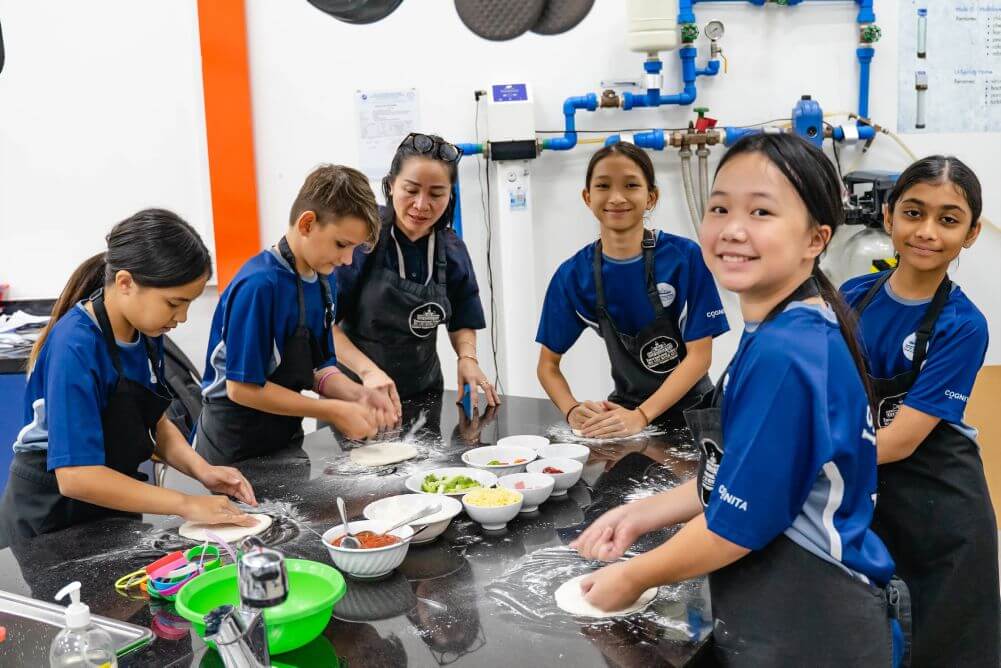
As having experience in working with culturally diverse groups of families and teachers from over 60 countries, ISHCMC fosters a rich global community that encourages cross-cultural understanding, empathy, and open-mindedness – qualities essential for thriving in an interconnected world. Additionally, we value students’ perspectives and empower them to engage with curriculums actively, supporting their educational growth and development.
Visit The Schools
During the school tour, parents should utilize the opportunity to gather the following information:
- Reputation: Inquire about the school’s standing within the local community and seek out reviews from current and past parents
- Campuses’ Views: Exploring the campus provides a firsthand impression of the school’s expansive capacity and modern amenities. ISHCMC stands out with its two campuses – primary and secondary – located in one of Ho Chi Minh City’s most picturesque districts, offering a beautiful and conducive learning environment.
- Culture: Observe the school’s culture firsthand by noting how staff and students interact
- Principal: During your meeting, assess the principal’s leadership style, their vision for the school, and how they address challenges
- Teachers: Look into the qualifications of the teaching staff and observe their interactions with students
- Students: Observe students’ behavior in classrooms and common areas. Look for signs of engagement, respect between students and teachers, and the overall happiness of the student body
- Parental involvement: Ask about how the school facilitates parental involvement. This can include parent-teacher associations, volunteer opportunities, and how the school communicates with parents about their child’s progress

Process The Transfer Application
School transfer requires carefully gathering related documents and filling out forms with accurate information. The next part will break down all the steps in the transfer process to ease your experience when coming to this phase.
- Collect all required paperwork: The required documents for school enrollment can vary between institutions. Typically, the essential paperwork includes student transcripts, test scores, letters of recommendation, and immunization records.
- Fill out any forms needed: The list of forms to prepare before completing the application process includes the transfer application form, health information form, and previous school information form.
- Hand-in application: Most schools offer convenient digital ports for parents to apply online. However, visiting the school administrative office to handle documents is excellent for checking and confirming all details.
Preparing Your Child for a School Change
Transitioning to a new school can be emotionally challenging for children, often due to insufficient preparedness. As experienced guides, parents play a vital role in building their children’s confidence to face new challenges.
Here are some effective practices parents can use to support their children’s adjustment at various stages before the first day of a new school:
2 Weeks Before
- Inform about the upcoming change: Discuss the difference in the learning culture and living environment. Address all the concerns about their fears and expectations to support them timely.
- Take your child to the school: Reassure your child with a first impression of the new classroom and teachers. Familiarize them with how peaceful and functional the surrounding environment is to reduce their worries partly.
- Connect with other parents: Establish connections between parents and arrange playdates and meetups – helping them build friendships and adjust to new environments. Initiating these connections can occur through social media platforms or via the school’s administration board.
- Build a new routine: Based on the distance to school and the learning schedule, you can help your child adjust the time they spend waking up, having meals, and going to bed.
3 Days Before
- Pack together: Support your child in preparing and reviewing all necessary things like lunch boxes, outfits, and backpacks.
- Encourage them with positive goals: Reduce your children’s anxiety by discussing positive achievements they can get in the new semester.
- Confirm travel arrangements: It’s essential to confirm the correct bus number and the precise pickup and drop-off times if your child is using school transportation. If you’re driving your child in a personal vehicle, ensure you’re clear about the route and have organized carpool arrangements efficiently, if applicable.
A Night Before
- Prepare for the morning: Finish all the checklists, including lunch, uniforms, and backpack. It’s preferable to have everything ready the night before so as not to rush things the following day.
- Visit the school’s website: Check any last-minute updates or messages to avoid missing important information for the first day.
- Early bedtime: Encourage your child to go to bed early, emphasizing the importance of a good night’s sleep. A restful sleep can help alleviate anxiety and better prepare them to face the new challenges of an upcoming school day.
Settle In for Your Child After Moving Schools
The initial week and month after starting at the new school serves as a critical period for observing your child’s emotional responses. During this phase, streamlined communication with your children and the school’s administrative board can identify and address proper solutions to cope with potential problems.
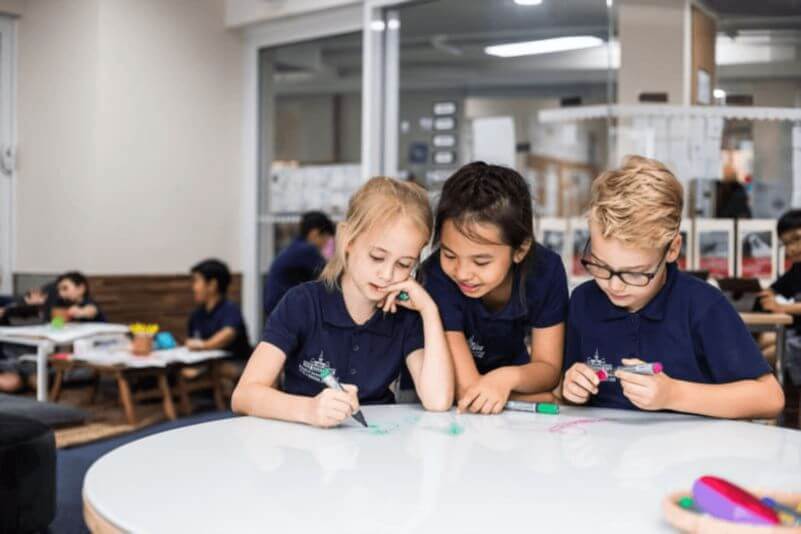 Here are a couple of things parents can do to reassure children about staying on the right track:
Here are a couple of things parents can do to reassure children about staying on the right track:
- Be a good listener
- Communicate with teachers and the school’s staff to obtain information about your children’s concerns
- Establish community support with the participation of other parents and social connections to offer the best conditions for your children
Conclusions
The decision on how to move schools requires detailed consideration based on children’s preferences, schools’ educational advantages, and other supportive services. At ISHCMC, where we host a culturally diverse community of families and teachers from over 60 countries, we pride ourselves on offering excellent conditions that facilitate a successful transition for students moving to new schools.
ISHCMC International Primary School and International Secondary School provide diverse academic programs with different learning approaches focusing on improving leadership, teamwork, critical thinking, and other foundational skills. Creating a culture of achievement with us now.

